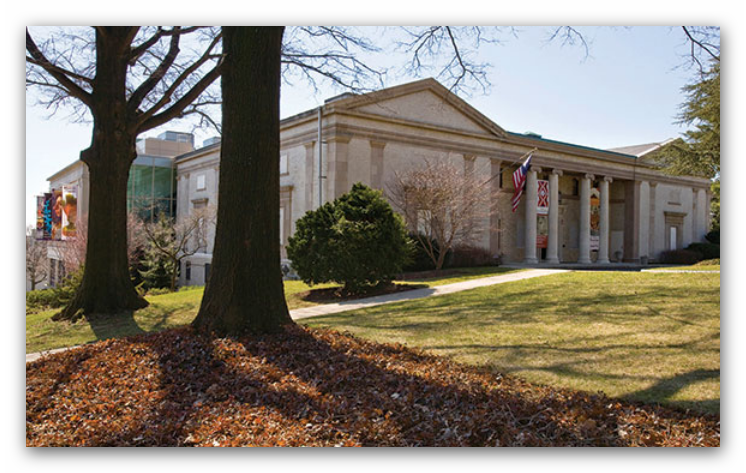Feb 5 2017 - Jun 18 2017
Montclair, NJ
Matisse and American Art is the first exhibition to examine this French master’s profound impact upon the development of American modern art from 1907 to the present. His art has provided a liberating model for American artists’ varied explorations of vibrant color, strong, fluid lines, and clear compositional structures in their pursuits of self-expression.
Featuring 65 paintings, archival objects, sculpture, prints, and works on paper, Matisse and American Art will juxtapose 19 works by Matisse with 44 works by American artists, including , Alfred Maurer, Maurice Prendergast, Stuart Davis, Richard Diebenkorn, Robert Motherwell, Ellsworth Kelly, Roy Lichtenstein, Andy Warhol, Romare Bearden, John Baldessari, Sophie Matisse, Faith Ringgold, and others. Matisse’s transformative impact on their works is revealed not only by their adaptations of his palette and pictorial structures but also through their choice and appropriation of his subject matter—still lifes, landscapes, figurative works, studio interiors, and portraits. While previous projects have illuminated Matisse’s relationship with postwar artists, this will be the first exhibition to expand Matisse’s impact beyond the typical focus upon the New York School by extending it back to the beginning of the 20th century and forward to the 21st.
The exhibition will open with an introductory section evoking a range of responses to the master, from the early 20th century study by his student Morgan Russell to Faith Ringgold’s late 20th century appropriation titled Matisse’s Model, with a fictional character based on the artist and other modern young women of color. The exhibition then proceeds with early 20th century explorations of the nude as seen in the work of Matisse’s students Max Weber and Sarah Stein, as well as William Zorach and Maurice Prendergast. The next section of the show addresses Matisse’s theme of the window as a metapho for the dialogue between the interior world of the artist and the external world of reality. An archival section featuring Matisse on the cover of Time magazine in 1930, as well as various exhibition catalogues and publications, will serve as an orientation to the history of the dissemination of Matisse’s influence.
The final sections of the exhibition explore Matisse’s pervasive postwar impact on artists, especially in terms of the bold, simplified profiles and vibrant colors of his cut-outs. Works by Ellsworth Kelly, Robert Motherwell, Stuart Davis, Judy Pfaff, Romare Bearden, and the illustrator Eric Carle represent the wide-ranging responses to Matisse’s inventive “drawing with scissors.” The exhibition concludes with the work of Roy Lichtenstein, Tom Wesselman, Andy Warhol, Janet Taylor Pickett, and John Baldessari, who have appropriated and adapted Matisse’s classic themes of the dance, the studio, the nude, portraiture, and the goldfish bowl as varying approaches to his universal art and fame.
Credit: Exhibition overview from museum website.
Whether or not you go, Ruthless Hedonism: The American Reception of Matisse (1999) argues that Matisse's sober presentations of himself were calculated to fit with the social constraints and ideological demands of the times. Matisse's strategy included cooperating with museums, cultivating private collectors, playing off dealers one against another, and reassuring the media that, whatever his reputation as an avant-gardist, the conduct of his life was solidly bourgeois. "Oh, do tell the American people that I am a normal man; that I am a devoted husband and father, that I have three fine children, that I go to the theatre."
Moving from the late 1920s, when Matisse's output was shedding its outlaw reputation, to the early 1950s, when his work was canonized, O'Brian shows how the way Matisse's work was viewed changed as attention shifted away from the seductiveness of his subject matter to the seductiveness of his paint. The art's resolute rejection of political concerns, its deployment of decorative design for visual satisfaction, and its representations of pleasure encouraged American audiences, who in the 1930s deemed the art disreputable, to celebrate its gratifications by the early years of the Cold War.
This intriguing, wide-ranging investigation of Matisse's self-promotion, America's uneasy embrace of modernism, and America's consumer culture and politics provides a rich context to Clement Greenberg's words published in the Nation in 1947: "Matisse's cold hedonism and ruthless exclusion of everything but the concrete, immediate sensation will in the future, once we are away from the present Zeitgeist, be better understood as the most profound mood of the first half of the twentieth century.
Exhibition Venues & Dates
Feb 5 2017 - Jun 18 2017
Montclair, NJ

